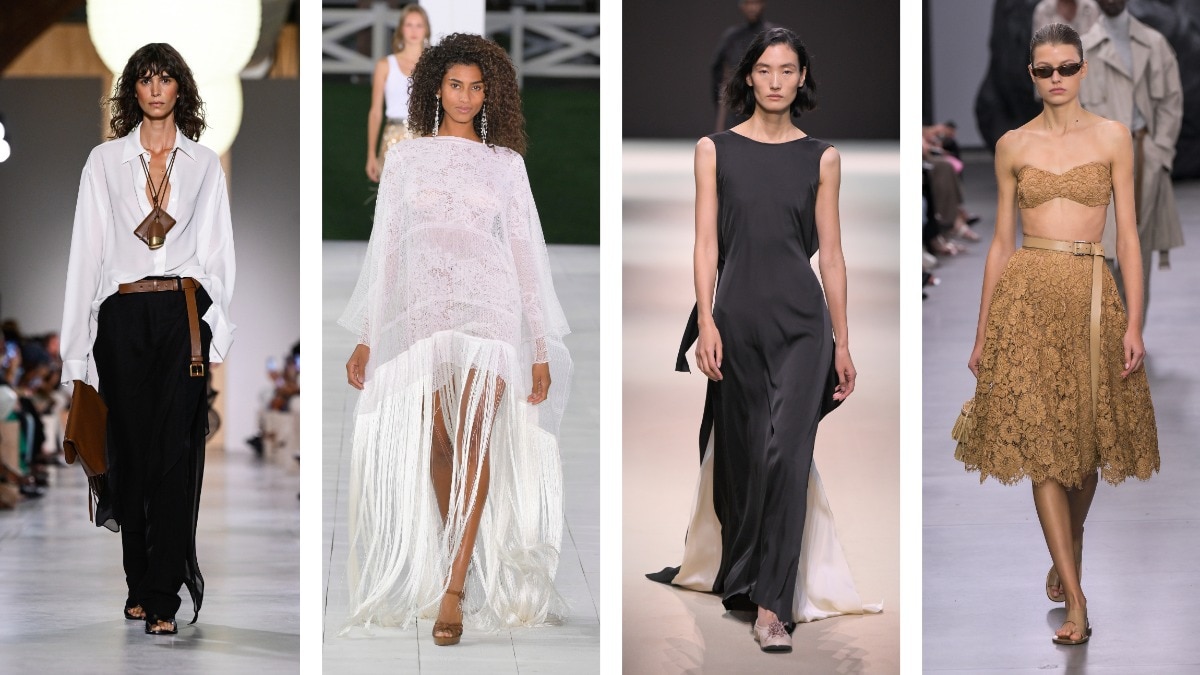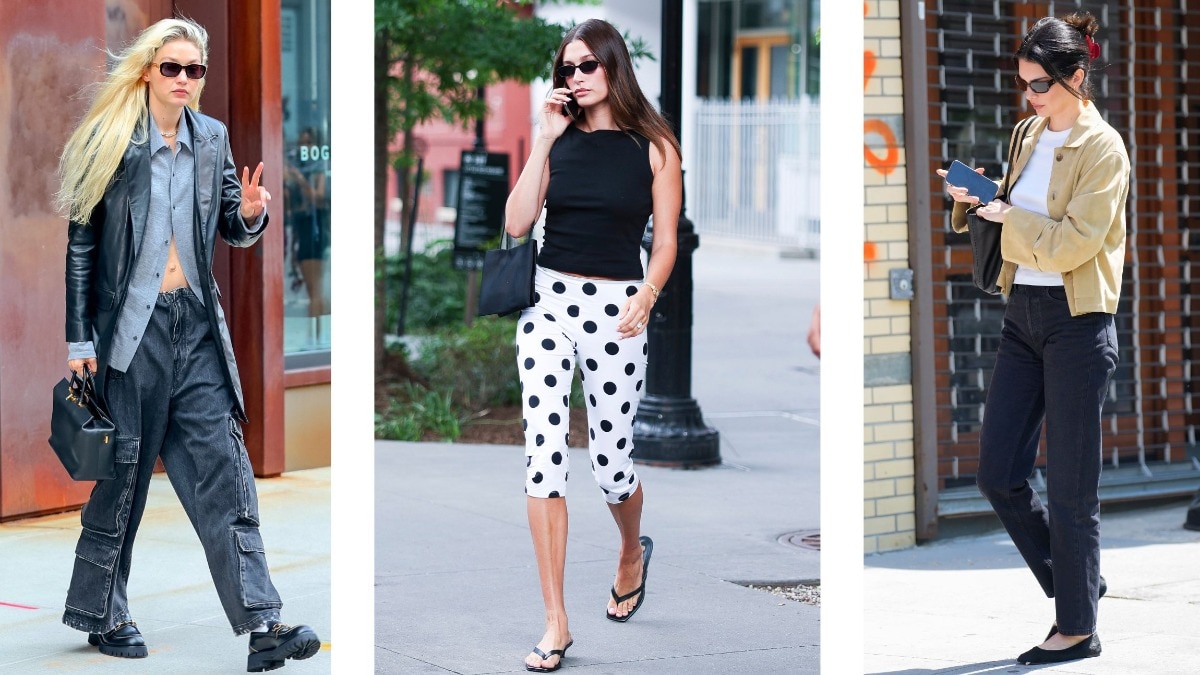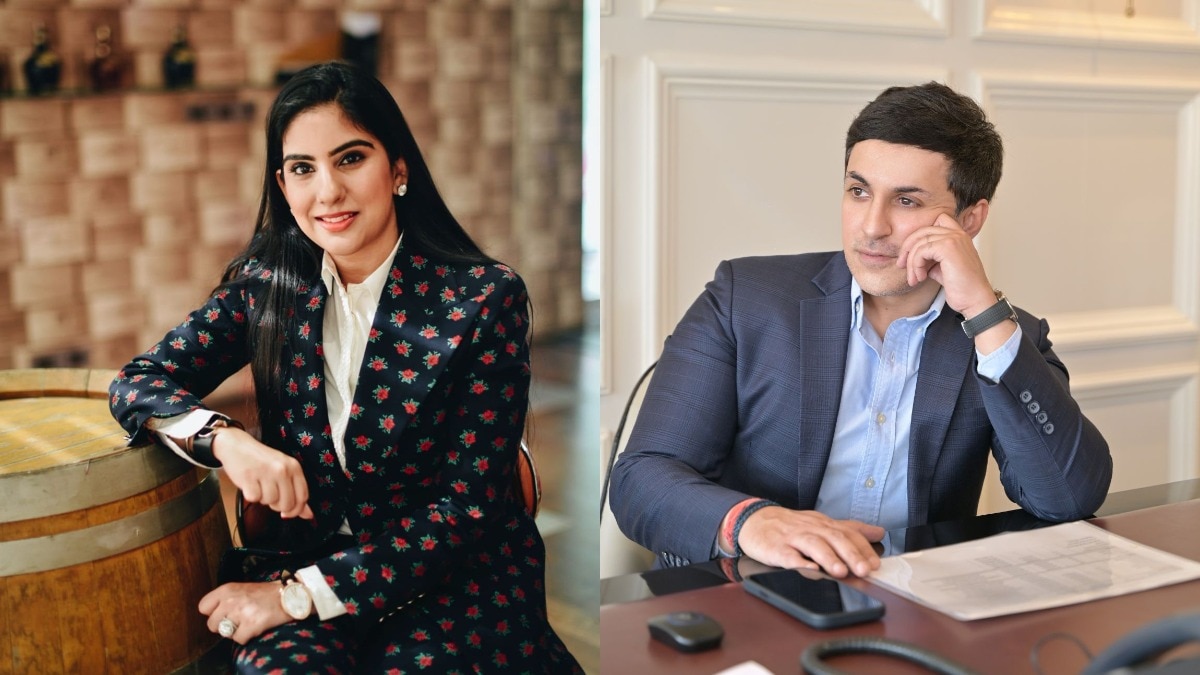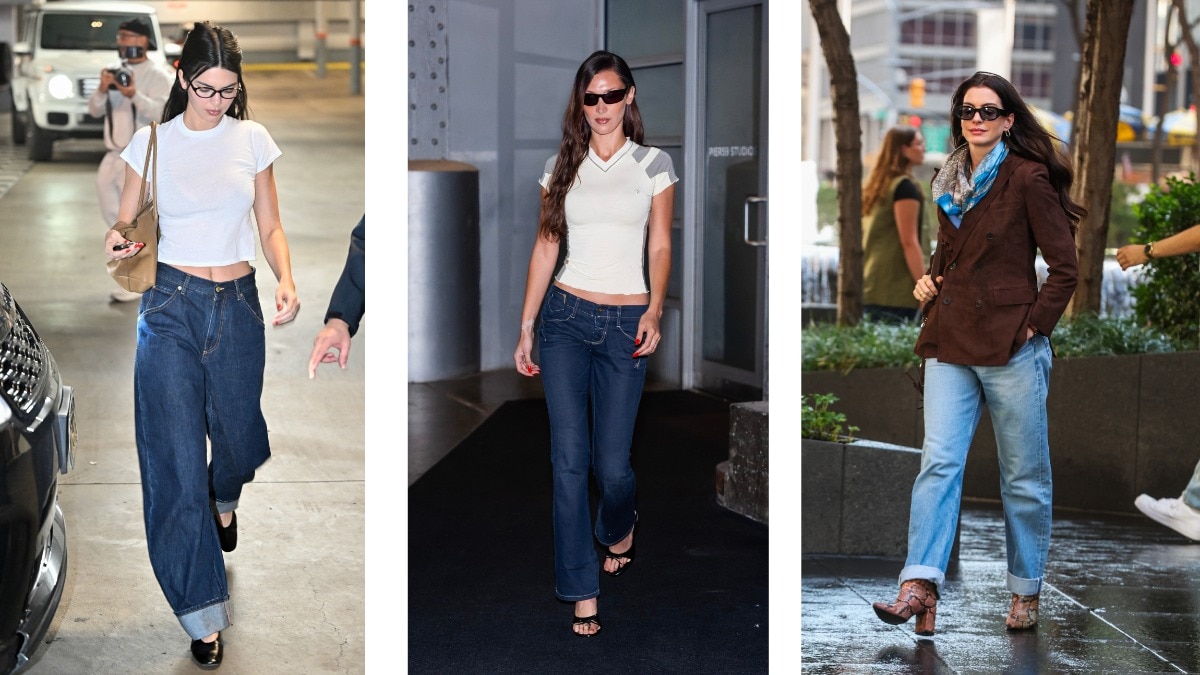
Will an upcoming fashion show signal a change in Victoria’s Secret’s troubled past?
The lingerie brand that once stuck to its ‘angel’ wings is planning to offer a new vision—and contrition.


Victoria’s Secret is not going down without a fight. With revered newspapers calling the brand’s models or ‘Angels’, as they are popularly called, “a corps of notably thin catwalkers who would strut in heavy wings and sky-high stilettos”, it is aware of what people have been saying—that the brand is anachronistic and outdated; that it is deep-rooted in the idea that women, dressed in lingerie that accentuates their curves, are not a symbol of self-expression and confidence but objectification.


It knows that organising a fashion show in 2018 with models wearing lace-etched underwear, tartan miniskirts, feathered wings, over-the-knee boots, and platform heels soaring upwards in New York the same week that more than 100 female politicians from around the world gathered in the House of Commons in Britain to commemorate women’s suffrage and an unprecedented number of women of all races were elected to the Congress in the U.S.A. was maybe not the best timing nor the best expression. And it knows that for those very fashion shows critics have expressed their displeasure, stating the brand to be “corrosive, discriminatory, and simply outdated” and equating the runway shows to “soft-core pornography.”

So, in 2019, after poor viewership of the shows and controversies surrounding the brand, parent company L. Brands decided to press pause on its annual high-fashion outings. And, in 2020, a New York Times investigation found the brand guilty of widespread bullying and harassment of its employees and models, six months after which Edward Razek, the chief marketing officer of the brand, stepped down due to sexual misconduct allegations.
But how did it get to this? How did one of the world’s largest retail and beauty brands, which heavily relied on consumer imagination and aspirations of women, go from being the aggregator that colonised those women’s wardrobes to becoming a brand that stopped seeding across borders with a shrinking empire?
Victoria’s Secret was founded in 1977 by Roy Raymond, a former marketer for Vicks, who allegedly felt uncomfortable buying lingerie for his wife from established retailers and believed there might be an undiscovered market for ostentatious underwear sold in more inviting settings. In Palo Alto, California, Raymond decided on a subtly Victorian aesthetic for his first store, which was an amalgamation of dark wood, oriental rugs, and silk draperies—all of which were his reimagination of a Victorian boudoir. He named the store ‘Victoria’ to evoke the propriety and respectability of the Victorian era, and though she appeared to be well-bred, Victoria had some ‘secrets’ that were kept hidden.

He chose a distinctive sales strategy, as Susan Faludi describes in her 1991 book Backlash: 'The Undeclared War Against American Women'. He was aware that some women could find undergarments that gratify the male gaze irreconcilable with the second-wave feminism that was prominent at the time. The idea that clothing intended to restrict and deform may be empowering, if not liberating, is the kind of twisted reasoning that was employed to convince housewives in the West to purchase girdles in the 1950s (“Because you insist on freedom,” a Skippies ad from 1954 from the girdle-making company Formfit in Chicago read).

In the first-ever televised Victoria’s Secret fashion show in 2001, models tried their best to walk as freely as they could in corsets and moulded bras that left no room for air, as they attempted to get the crowd to cheer for them by blowing kisses, waggling their booty, drawing hearts in the air, and waving. It seemed it was a physical representation of women’s sexual liberation in the new millennium—it was awkward, unnatural, and outright painful.
However, Victoria’s Secret, more than any other cultural figure or commodity, defined what sexuality in the late 1990s and early 2000s looked like. Instigating a version of sexiness, Raymond’s plan to persuade women to objectify themselves for their purported gratification foresaw a moment that was filthy, exclusive, and consumerist. While restricting female sexual development to the male imagination, the company made “beauty” unachievable.
The brand’s amalgamation of sex, business, and marketing—however clichéd it seemed—proved successful in the decade that followed, thanks to the marketing prowess of Edward Razek. A “fantasy” bra—the pièce de résistance—encrusted with precious emeralds, rubies, and sapphires and accompanied by its security detail was showcased in every fashion show. The models lost weight. They came to represent the impossibility of physical beauty.

The 2020 exposé by 'The New York Times' on Razek (after his departure in 2019), which claimed he verbally harassed models and made advances at them, was a catalyst for the collapse of the lingerie-maker giant. One model alleged that after continually turning down his advances, she was finally passed over for the annual fashion show for the first time in four years. In a related piece, it was described how Victoria’s Secret photographer Russell James asked models he was photographing for the brand to strip off for him in additional, unpaid pictures. James finally collected these scanty images into limited-edition books that he sold for a high price.
With a drop in revenues by nine per cent in 2021, a cloud of bad talk, and supermodels like Gisele Bündchen, Naomi Campbell, Karlie Kloss, and Gigi Hadid parting ways with the company, a shift in strategy seems to be Victoria’s Secret’s answer.


In 2021, Victoria’s Secret announced it would rebrand, after years of declining credibility and a mea culpa about the systematic and judgmental failures in the company’s storied past—starting with selling maternity bras. With body-positive role models from a variety of fields, including four-time Grand Slam champion and former World No. 1 Naomi Osaka, plus-size model Paloma Elsesser, soccer player Megan Rapinoe, actor Priyanka Chopra, and other well-known figures, the company debuted its new project, the VS Collective, in June. The following month, the brand announced that it would begin using curvaceous mannequins in its locations all across the country and increase the representation of different body types on its website. Additionally, the firm debuted a collection of mastectomy bras in October, another first for the brand. These were all significant steps in helping and uplifting a range of new, underserved clients.
“We are acknowledging women at every stage of their lives, and that’s what’s driving all of us,” said chief design officer Janie Schaffer in an interview. She also mentioned that a change in creative director was also led by an entirely new board of directors that consists of seven people, six of whom are women.
The brand has also established a global fund for women’s cancer programmes to support the advancement of cancer research “for women, by women,” launched an original podcast called VS Voices, and collaborated with a female-focused non-profit to develop a leadership-development programme for its female employees to help “identify and achieve their purpose”.
Although the seeds are beginning to sprout, it is debatable if they have blossomed. According to critics, the brand has ways to go before it really embraces all women. “While it’s refreshing to see Victoria’s Secret reinvent their brand from the inside out, there seems to be a large hesitation about whether or not our support is warranted by the small changes they’ve made,” Gianluca Russo, fashion writer and author of The Power of Plus said in an interview.

Thus, after a four-year hiatus, when the brand confirmed it would be putting together a fashion show in the form of a feature film called 'The Victoria’s Secret World Tour' this year, users on Twitter shared their feelings: “I’ll reserve my outrage until we see if they have become inclusive or all this just merely performative,” one wrote, while another wrote: “Glad it’s coming back, but doubt it will be as glamorous.”
The film will centre on the 20 international designers and global creatives who are a part of the VS20. There will be a completely realised collection that is curated and created by four groups from the cities of Bogota, Lagos, London, and Tokyo. The collection will also feature customised VS items.
But will Victoria’s Secret, whose shows once featured models soaked in bedazzled undergarments with everything waxed and moisturised to airbrushed extremes, offer contrition with a show that focuses on just the people and garments that fit them like a second skin? “We’re going to continue to lean into the marketing spend to invest in the business... and also to support the new version of our fashion show, which is to come later this year,” said the brand’s CFO Timothy Johnson in an interview.
Although, a few questions remain unanswered: How did Victoria’s Secret evolve from a classy catalogue business to the entertainment powerhouse it is today? How has it changed from serving as a psychological racehorse for our complex emotions about the concept of ‘sexiness’ and how do we liberate ourselves from that dominant mentality?

The truth is that each individual determines what is sexy, so there is no one answer or brand that has the answer. However, extremes and binaries continue to dominate lingerie imagery—either there are lots of bodies covered in cosy cotton pants in neutral tones or there are thongs and padded bras.
Two companies that are frequently cited as alternatives—Kim Kardashian’s Skims and Rihanna’s Savage x Fenty—which fit into the two categories. While the first is, minimalism meets wabi-sabi, the second is maximum provocation. And because the creators of those lines are famous women who are also known for being seductive, they receive special treatment. And, theoretically, since the money they make empowers women who openly own their sexuality, that idea of ‘power’ eventually filters down to the clients they work with.
The key to being attractive is to feel comfortable in your own skin, not just in one particular piece of clothing, and real empowerment doesn’t come in a bra and panty set. It emerges from it.










